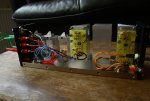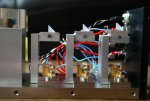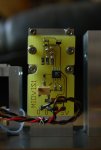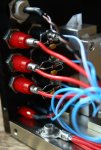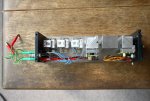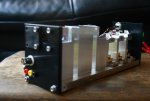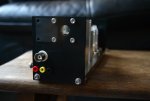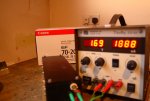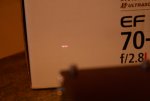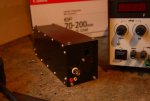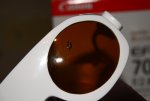Morgan
0
- Joined
- Feb 5, 2009
- Messages
- 2,174
- Points
- 0
Hi All,
As well as getting my Heruurscience gear recently, I picked this thing up for £50 from ebay. (I will get round to buying an LPM Laserbee. I promise!!!).
It was a bit of a gamble from the picture shown in the auction but after getting it I think it paid off. There was another one but by the time I realised what I'd got, it was gone.
Anyway, here are some pics. I gave it the tear-down treatment for you but when it's all together I really would be happy to drive a truck over it! Being ex-government research equipment, the build quality is fantastic. Nobody was in any kind of rush to build this thing.
So far I determined that:
All three diodes visible are IR, (wavelength unknown at this point).
All run at around 1.8V and upto 3.5A, (still learning the testing procedure so these values are open to debate), and all burn quite nicely although not evenly across the beam line.
There looks to be another diode in the sub-assembly immediately to the right of the IRs and this is powered be the associated circuit, (labelled MIOVIS1). I hazard a guess that the other assembly is to measure the first? Both have another input via the connection you can see on the outside of the box, (can't remember the name for them).
Any guesses as to the purpose?
Regardless of the original use, I think it wasn't a bad buy. Bit random but nice to get my hands on a proper bit if kit!
Looking forward to your input.
M
edit* I do have more photos but didn't want to swamp the server! *
As well as getting my Heruurscience gear recently, I picked this thing up for £50 from ebay. (I will get round to buying an LPM Laserbee. I promise!!!).
It was a bit of a gamble from the picture shown in the auction but after getting it I think it paid off. There was another one but by the time I realised what I'd got, it was gone.
Anyway, here are some pics. I gave it the tear-down treatment for you but when it's all together I really would be happy to drive a truck over it! Being ex-government research equipment, the build quality is fantastic. Nobody was in any kind of rush to build this thing.
So far I determined that:
All three diodes visible are IR, (wavelength unknown at this point).
All run at around 1.8V and upto 3.5A, (still learning the testing procedure so these values are open to debate), and all burn quite nicely although not evenly across the beam line.
There looks to be another diode in the sub-assembly immediately to the right of the IRs and this is powered be the associated circuit, (labelled MIOVIS1). I hazard a guess that the other assembly is to measure the first? Both have another input via the connection you can see on the outside of the box, (can't remember the name for them).
Any guesses as to the purpose?
Regardless of the original use, I think it wasn't a bad buy. Bit random but nice to get my hands on a proper bit if kit!
Looking forward to your input.
M
edit* I do have more photos but didn't want to swamp the server! *


